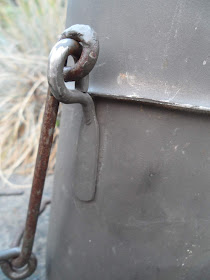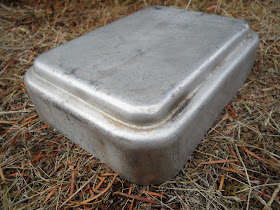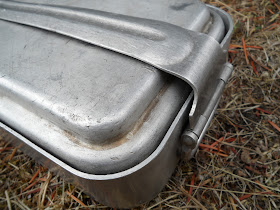You can read more about these mess kits in my previous posting. For now we are going to cut to the chase, as they say, and take a closer look at this one.
Here are a few links to some previous blog postings on the Swedish Mess Kits:
https://sharky-fourbees.blogspot.com/2011/07/swedish-m40-mess-kit-svea-stove.html
https://sharky-fourbees.blogspot.com/2018/08/swedish-mess-kits-m40-and-m44.html
http://sharky-fourbees.blogspot.com/2011/07/swedish-m40-mess-kit-svea-alcohol-stove.html
Swedish Model 1940, Stainless Steel Mess Kit:
 |
| Clip used to hold handle down. |






































































